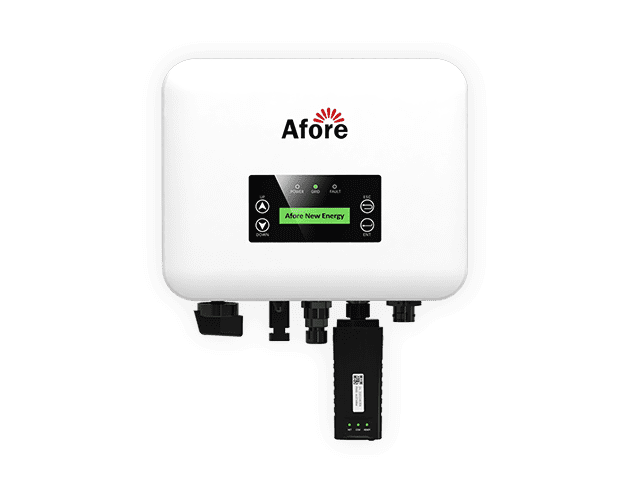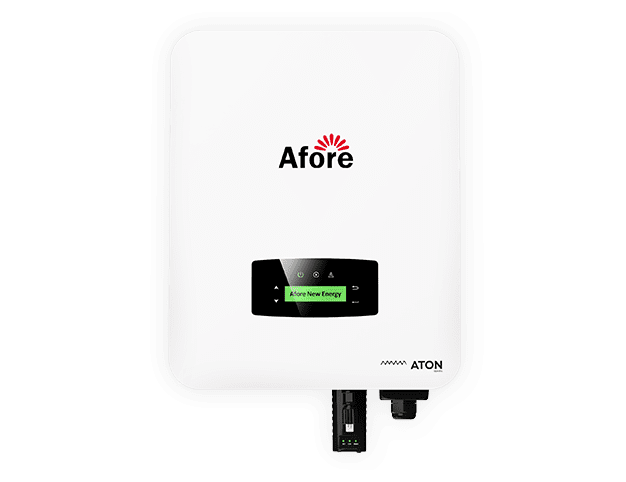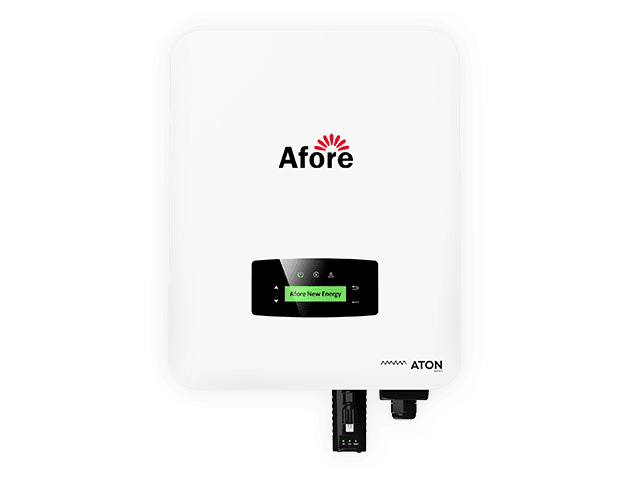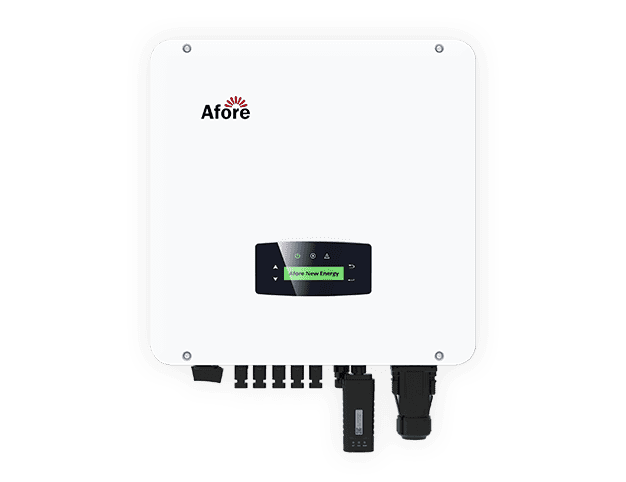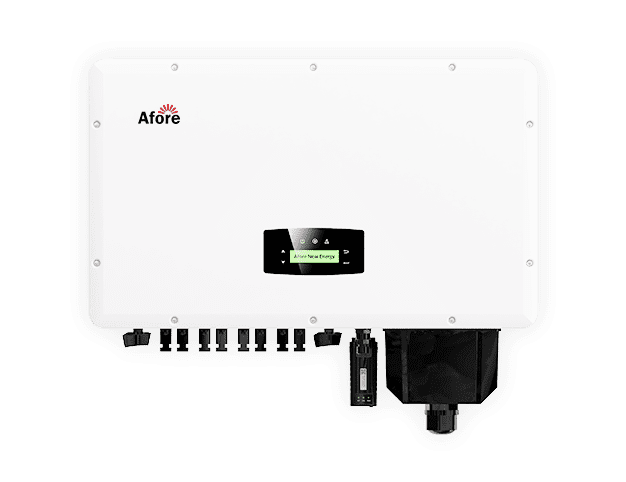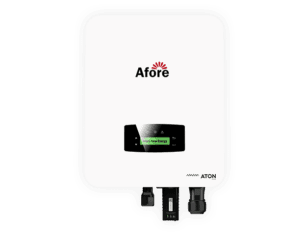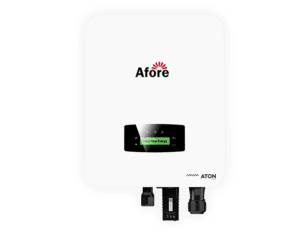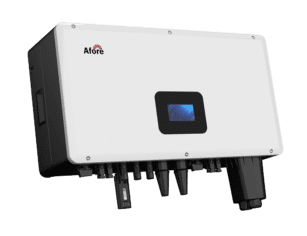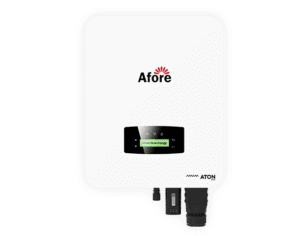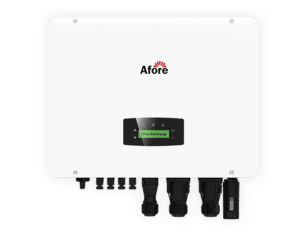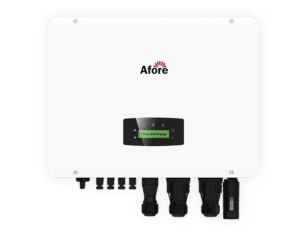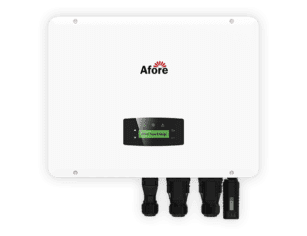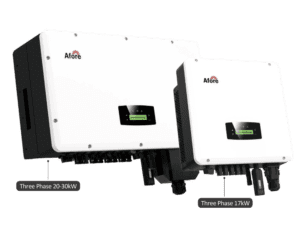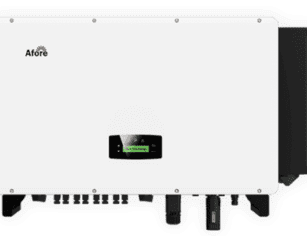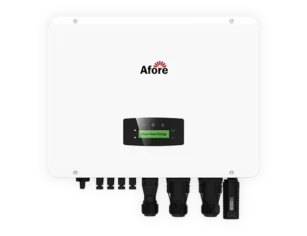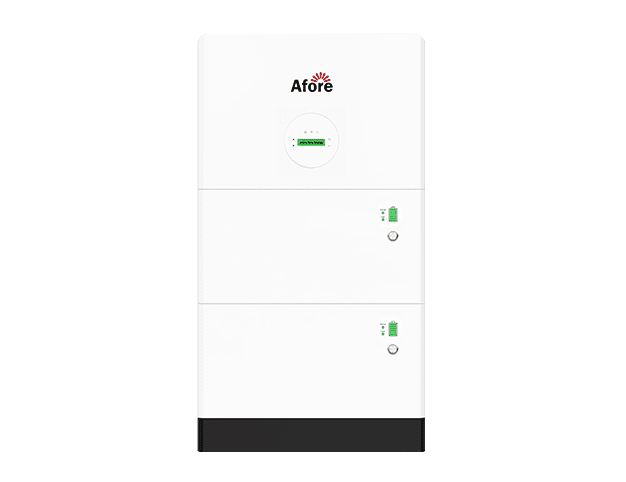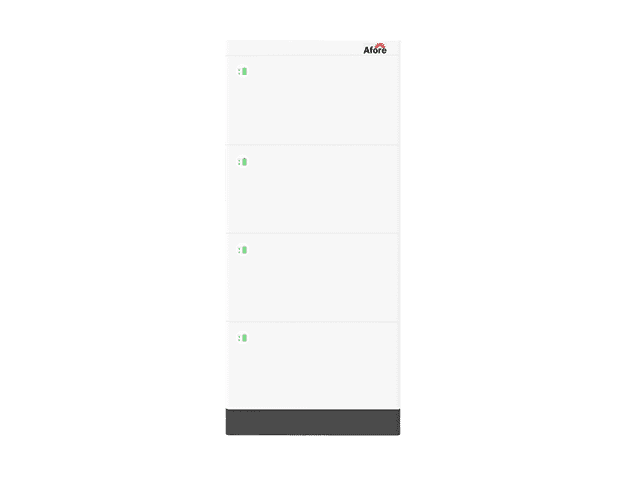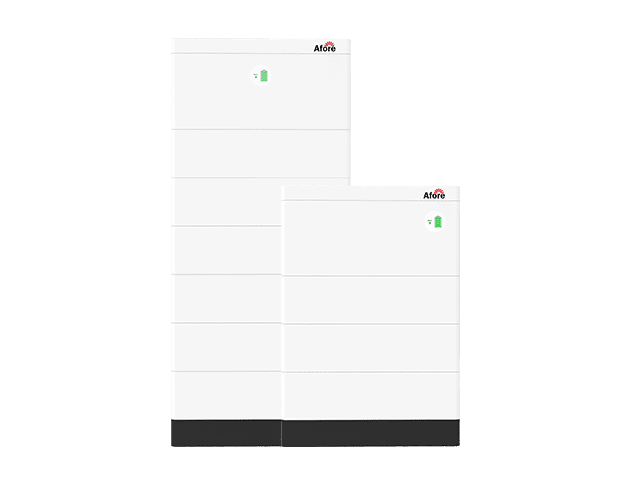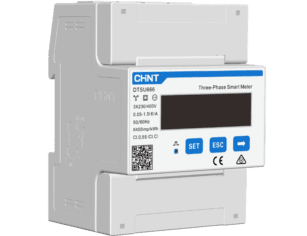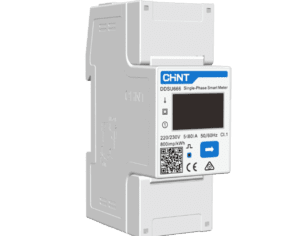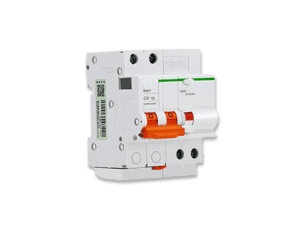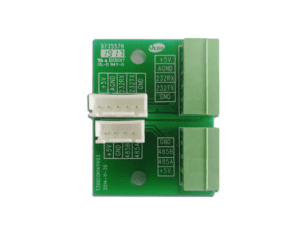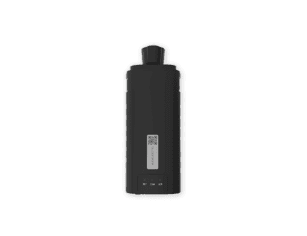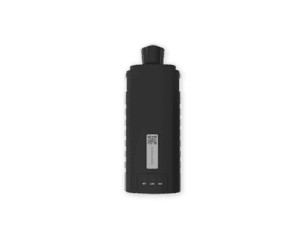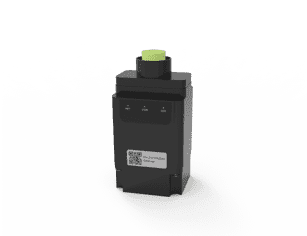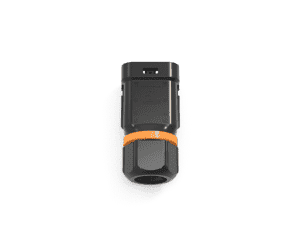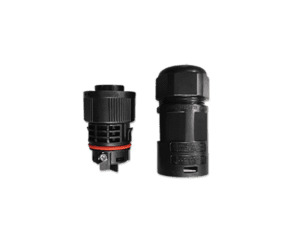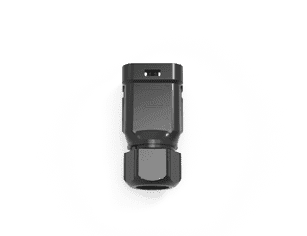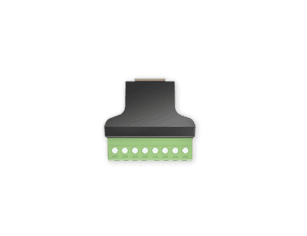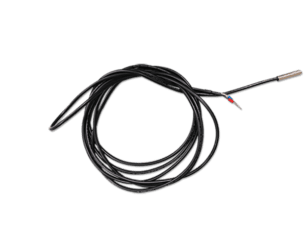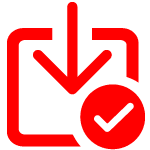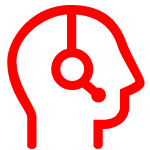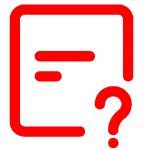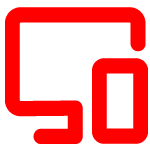Inversor solar residencial: guia definitivo para proprietários de residências

Índice
Investir em um inversor solar residencial é uma das decisões mais importantes para os proprietários que desejam maximizar a eficiência de seu sistema de energia solar. Um inversor solar não apenas converte a eletricidade CC gerada pelos painéis em energia CA utilizável, mas também desempenha um papel fundamental no monitoramento do desempenho e na proteção do sistema elétrico da sua residência. Com o inversor certo, você pode desfrutar de uma produção de energia mais confiável, contas de eletricidade potencialmente mais baixas e uma instalação solar mais duradoura. Neste guia, vamos nos aprofundar nos tipos de inversores solares residenciais, sua vida útil, considerações sobre dimensionamento e problemas comuns, ajudando você a fazer uma escolha informada que atenda às necessidades energéticas de sua residência.
O que é um inversor solar residencial?
Definição e funcionalidade
Um inversor solar residencial é um componente crucial em um sistema solar fotovoltaico (PV). Sua principal função é converter a eletricidade de corrente contínua (CC) gerada pelos painéis solares em eletricidade de corrente alternada (CA), que é usada para alimentar eletrodomésticos. Essa conversão é essencial porque a maioria dos dispositivos domésticos opera com energia CA, enquanto os painéis solares produzem energia CC.
Importância nos sistemas de energia solar
Sem um inversor, a eletricidade produzida pelos painéis solares não pode ser utilizada em uma residência comum. O inversor não apenas facilita a conversão de CC para CA, mas também desempenha um papel na maximização da produção de energia por meio de recursos como o MPPT (Maximum Power Point Tracking). O MPPT ajusta o ponto de operação do inversor para garantir que os painéis solares operem em sua potência de saída ideal, aumentando assim a eficiência geral do sistema.
Tipos de inversores solares residenciais
Quando se trata de instalar um sistema de energia solar em casa, é fundamental escolher o inversor solar residencial correto. O tipo de inversor selecionado afeta não apenas a eficiência com que o sistema converte a luz solar em eletricidade utilizável, mas também a confiabilidade geral, a vida útil e a facilidade de manutenção. Vamos explorar os principais tipos de inversores solares residenciais e o que torna cada um deles único.
Inversores de cordas
Os inversores String são o tipo mais comum de inversor solar encontrado em instalações residenciais. Eles funcionam conectando uma série, ou "string", de painéis solares, enviando a energia CC combinada para um único inversor, que a converte em eletricidade CA para sua casa.
Vantagens dos inversores de cordas
- Custo-benefício: Os inversores de cordas normalmente têm um custo inicial mais baixo em comparação com os microinversores, o que os torna uma opção popular para proprietários de casas com orçamento limitado.
- Simplicidade: Com menos componentes e um projeto centralizado, os inversores string geralmente são mais fáceis de instalar e manter.
- Tecnologia comprovada: Esses inversores estão em uso há décadas, fornecendo uma solução confiável e bem compreendida para sistemas solares residenciais.
Desvantagens dos inversores de cordas
- Sensibilidade ao sombreamento: Se até mesmo um painel da cadeia estiver sombreado ou apresentar mau funcionamento, isso pode reduzir a saída de toda a cadeia, diminuindo a eficiência geral do sistema.
- Monitoramento limitado: A maioria dos inversores de string monitora a produção de energia no nível do string, o que significa que não é possível ver o desempenho de painéis individuais sem equipamentos adicionais.
Apesar de suas limitações, os inversores string continuam sendo uma opção sólida para residências com exposição uniforme do telhado e sombreamento mínimo. Eles oferecem um equilíbrio entre acessibilidade e eficiência para muitos proprietários de casas que instalam um inversor solar residencial.
Microinversores
Os microinversores são instalados em cada painel solar individual, convertendo a energia CC em CA diretamente no nível do painel. Essa abordagem permite que cada painel opere de forma independente, o que pode melhorar drasticamente a coleta de energia, especialmente em residências com problemas de sombreamento ou layouts de telhado irregulares.
Vantagens dos microinversores
- Otimização em nível de painel: Cada painel opera em seu pico de potência, de modo que sombreamento, sujeira ou um painel com defeito não afetam os outros.
- Monitoramento aprimorado: Os microinversores fornecem monitoramento detalhado para cada painel, proporcionando aos proprietários de imóveis percepções precisas sobre o desempenho do sistema.
- Escalabilidade: A adição de novos painéis é mais fácil, pois cada painel tem seu próprio inversor, o que facilita a expansão do sistema.
Desvantagens dos microinversores
- Custo inicial mais alto: Os microinversores normalmente custam mais no início do que os inversores string, o que pode ser uma consideração para proprietários de casas preocupados com o orçamento.
- Mais componentes: Mais unidades significam mais pontos de possíveis falhas, embora muitos microinversores venham com garantias longas.
- Instalação complexa: A instalação de um microinversor em cada painel pode ser mais trabalhosa e pode exigir experiência profissional.
Para os proprietários de residências que priorizam a eficiência e o desempenho em condições desafiadoras, os microinversores oferecem uma solução atraente. Eles são especialmente recomendados para sistemas em que o sombreamento ou a orientação do painel varia ao longo do telhado.
Inversores híbridos
Inversores híbridos combinam as funções de um inversor solar tradicional com recursos de armazenamento de energia. Isso significa que eles podem converter CC em CA e, ao mesmo tempo, gerenciar o armazenamento da bateria, permitindo que os proprietários armazenem o excesso de energia solar para uso posterior.
Vantagens dos inversores híbridos
- Armazenamento de energia: O excesso de energia gerado durante o dia pode ser armazenado e usado à noite ou durante quedas de energia.
- Energia de backup: no caso de uma interrupção da rede elétrica, os inversores híbridos podem fornecer energia de backup limitada, aumentando a segurança energética.
- Solução integrada: Eles eliminam a necessidade de um inversor de bateria separado, simplificando o projeto do sistema.
Desvantagens dos inversores híbridos
- Custo inicial mais alto: A funcionalidade combinada aumenta as despesas iniciais.
- Complexidade do sistema: a integração do armazenamento da bateria aumenta a complexidade técnica, o que pode exigir instalação profissional e manutenção periódica.
- Requisitos de manutenção: Tanto o inversor quanto o sistema de bateria precisam de monitoramento e manutenção ocasional para garantir o desempenho ideal.
Os inversores híbridos são ideais para proprietários de residências que buscam maximizar a independência e a eficiência energética. Quando combinado com painéis solares e uma bateria de bom tamanho, um inversor solar residencial híbrido pode reduzir significativamente a dependência da rede e diminuir os custos de eletricidade ao longo do tempo.
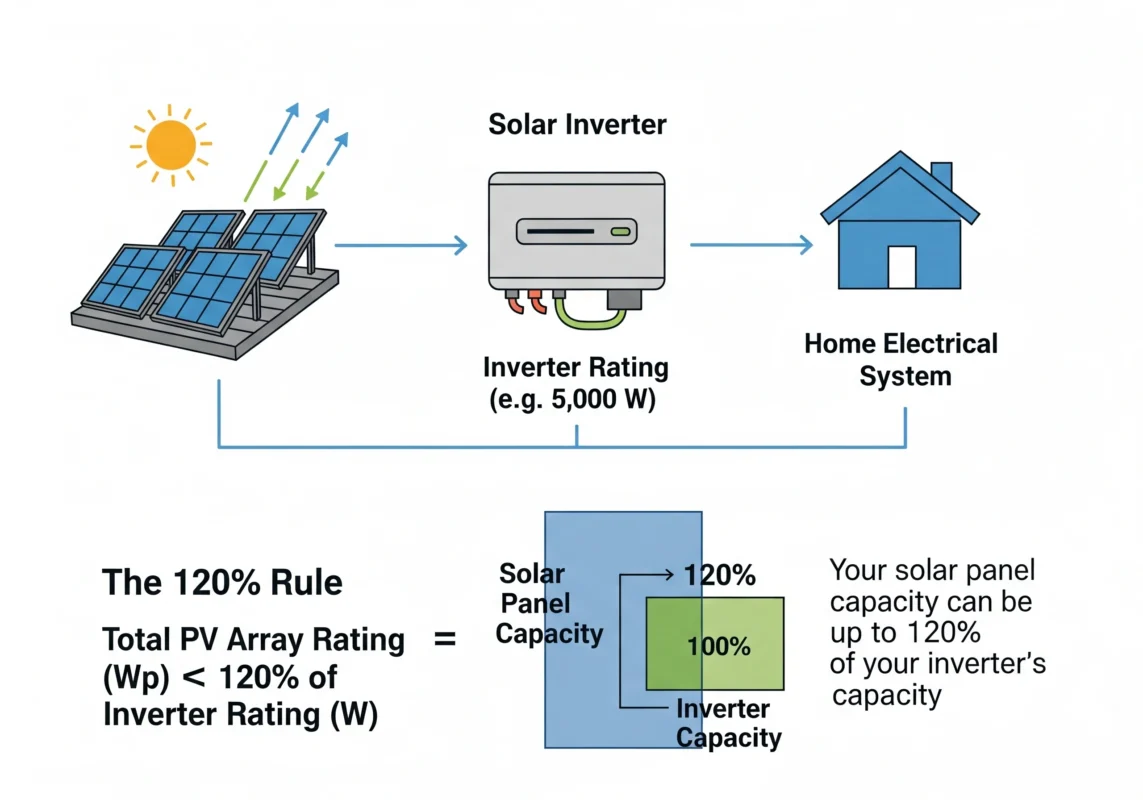
Vida útil dos inversores solares residenciais
Compreender a vida útil de um inversor solar residencial é essencial para os proprietários de imóveis que planejam um investimento de longo prazo em energia solar. Embora os próprios painéis solares possam durar 25 anos ou mais, os inversores geralmente têm vida útil mais curta, o que torna importante escolher uma unidade confiável e planejar uma eventual substituição. Saber o que esperar pode ajudar a evitar paralisações inesperadas e custos adicionais.
Tempo de vida típico
A vida útil típica de um inversor solar depende de seu tipo e da qualidade de construção.
- Inversores de cordas: Geralmente duram de 10 a 15 anos. Esses inversores são amplamente usados em instalações residenciais devido ao seu custo-benefício, mas podem precisar ser substituídos quando chegarem ao fim de sua vida útil.
- Microinversores: Geralmente duram de 15 a 25 anos. Como cada microinversor opera de forma independente e sofre menos estresse térmico, eles geralmente duram mais que os inversores de string tradicionais.
- Inversores híbridos: A vida útil é geralmente comparável à dos inversores string (cerca de 10 a 15 anos), mas o sistema integrado de gerenciamento de bateria pode exigir atenção e manutenção adicionais.
Investir em um inversor solar residencial de alta qualidade com uma garantia sólida pode reduzir o risco de falha prematura e proporcionar tranquilidade ao longo dos anos.
Fatores que afetam o tempo de vida
Vários fatores podem influenciar o tempo de funcionamento eficiente de um inversor solar:
- Condições ambientais: Os inversores expostos a temperaturas extremas, alta umidade ou luz solar direta podem se degradar mais rapidamente. A instalação adequada em áreas sombreadas e ventiladas pode prolongar significativamente sua vida útil.
- Qualidade dos componentes: Os inversores premium com componentes duráveis geralmente duram mais e mantêm uma eficiência mais alta em comparação com alternativas mais baratas.
- Carga elétrica e uso: Sobrecarregar um inversor ou conectar mais painéis do que o recomendado pode estressar o sistema, reduzindo sua vida útil.
- Práticas de manutenção: Inspeções regulares e reparos oportunos podem evitar que pequenos problemas se transformem em falhas no sistema.
A compreensão desses fatores ajuda os proprietários a fazer escolhas informadas ao selecionar e instalar um inversor solar residencial, garantindo a confiabilidade a longo prazo.
Importância da manutenção regular
A manutenção de rotina é fundamental para maximizar a vida útil e o desempenho de seu inversor solar residencial.
- Monitoramento de desempenho: Muitos inversores modernos oferecem ferramentas de monitoramento on-line que rastreiam a produção de energia e detectam possíveis falhas com antecedência. A revisão regular desses relatórios ajuda a identificar problemas antes que eles se tornem graves.
- Inspeção física: Verifique periodicamente se há poeira, detritos ou corrosão ao redor do inversor. Verifique se todas as conexões estão seguras e se a ventilação não está bloqueada.
- Manutenção profissional: A realização de uma inspeção anual por um técnico certificado em energia solar garante que tanto o inversor quanto o sistema mais amplo estejam funcionando de forma ideal.
Seguindo um cronograma de manutenção proativo, os proprietários de imóveis podem estender a vida operacional de seu inversor solar, reduzir o risco de falhas inesperadas e manter uma produção eficiente de energia ao longo dos anos.
Dimensionamento do inversor solar
A seleção do tamanho correto do inversor solar residencial é fundamental para garantir que o sistema de energia solar funcione de forma eficiente e segura. Um inversor muito pequeno pode não suportar a saída de energia de seus painéis solares, enquanto um inversor superdimensionado pode ser desnecessariamente caro sem melhorar o desempenho do sistema. O dimensionamento adequado equilibra a eficiência energética, o custo e a confiabilidade a longo prazo.
Importância do dimensionamento adequado
O dimensionamento adequado de um inversor solar garante que seu sistema possa converter a quantidade máxima de eletricidade CC dos painéis solares em eletricidade CA utilizável. Se o inversor for subdimensionado, ele poderá atingir sua capacidade máxima com muita frequência, causando o corte do excesso de energia e reduzindo a produção geral do sistema. Por outro lado, um inversor superdimensionado pode operar abaixo de sua eficiência ideal, o que pode levar a rendimentos de energia mais baixos.
Os fatores a serem considerados no dimensionamento incluem:
- Capacidade total do painel solar (classificação CC): Certifique-se de que o inversor possa lidar com a saída combinada de seus painéis.
- Padrões de uso de energia: Seu consumo doméstico influencia o tamanho ideal do inversor.
- Expansão futura: Se você planeja adicionar mais painéis, o superdimensionamento pode ser benéfico, mas apenas dentro de limites seguros.
Um inversor solar residencial bem dimensionado maximiza a coleta de energia e, ao mesmo tempo, mantém a segurança e a conformidade com as normas locais.
A regra 120% (NEC 705.12(D)(2))
A regra 120% é uma diretriz estabelecida pelo National Electrical Code (NEC) para garantir a instalação segura de sistemas solares. Ela permite que um inversor solar seja conectado a um painel elétrico cuja classificação do barramento seja de até 120% da saída do inversor.
Essa regra é particularmente importante para os proprietários de imóveis que desejam maximizar a capacidade do sistema sem violar os códigos elétricos. Ao seguir a regra 120%:
- Você pode instalar um pouco mais de capacidade solar do que a classificação original do painel.
- O sistema permanece seguro, evitando a sobrecarga do painel de serviço principal.
- Você fica em conformidade com os padrões NEC, evitando possíveis violações de códigos e problemas de seguro.
Por exemplo, se a classificação do barramento do seu painel for de 100 amperes, a entrada total do sistema solar pode ser dimensionada com segurança para até 120 amperes, de acordo com a regra NEC 120%. Seguir essa diretriz garante segurança e eficiência para o seu inversor solar residencial.
Superdimensionamento vs. subdimensionamento
Para escolher entre superdimensionar ou subdimensionar seu inversor solar, é preciso uma análise cuidadosa:
- Superdimensionamento: a instalação de um inversor menor do que a saída total do painel CC pode resultar em cortes, em que alguma energia é perdida quando a produção excede a capacidade do inversor. No entanto, um pequeno superdimensionamento dentro dos limites da NEC pode aumentar o rendimento geral de energia, especialmente em climas mais frios, onde os painéis produzem mais do que sua potência nominal.
- Subdimensionamento: Um inversor muito pequeno frequentemente operará em sua capacidade total, reduzindo sua eficiência e potencialmente encurtando sua vida útil. Ele também pode limitar sua capacidade de utilizar totalmente a saída dos painéis solares durante os períodos de pico de produção.
O planejamento adequado e o projeto do sistema são fundamentais para alcançar o equilíbrio certo entre a produção de energia e a relação custo-benefício.
Inversores híbridos e superdimensionamento
Os inversores híbridos, que integram conversão solar e armazenamento de bateria, oferecem flexibilidade adicional no dimensionamento. Com sistemas híbridos:
- O armazenamento da bateria reduz o desperdício: O excesso de energia que não pode ser convertido imediatamente pelo inversor pode ser armazenado para uso posterior.
- A eficiência do sistema melhora: Mesmo que o inversor seja ligeiramente subdimensionado em relação à saída total do painel, a energia armazenada garante uma perda mínima.
- Planejamento para expansão: Os inversores híbridos geralmente permitem a integração mais fácil de painéis solares e baterias adicionais sem a necessidade de substituir todo o inversor.
No entanto, mesmo com um inversor solar residencial híbrido, é essencial um cálculo cuidadoso do conjunto de painéis solares e da capacidade da bateria. O superdimensionamento além dos limites seguros ainda pode causar estresse no inversor, ineficiência ou falhas no sistema.
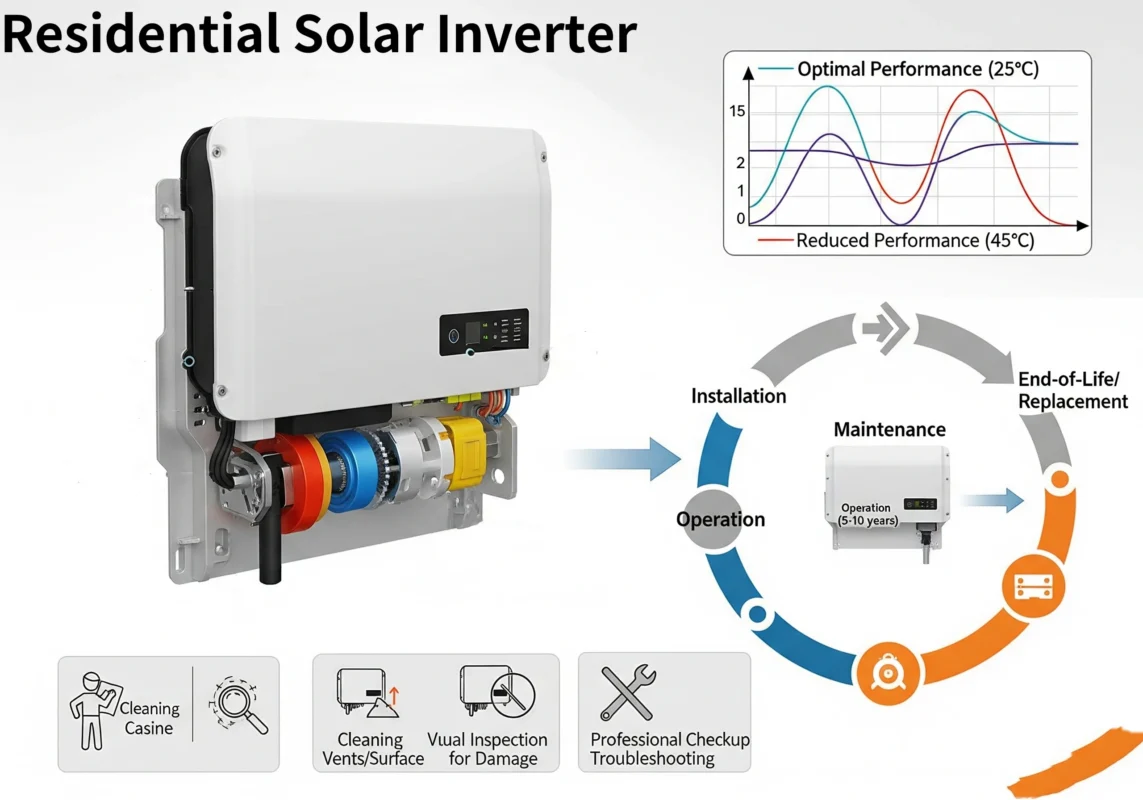
Problemas comuns com inversores solares
Mesmo o melhor inversor solar residencial pode apresentar problemas com o tempo. Entender os problemas comuns e como resolvê-los é fundamental para manter a eficiência do sistema e proteger seu investimento. O monitoramento regular, a manutenção oportuna e a rápida solução de problemas podem evitar que pequenos problemas se transformem em reparos caros.
Degradação de desempenho
Um dos problemas mais comuns com um inversor solar é a degradação do desempenho. Com o passar dos anos, a capacidade de um inversor de converter eficientemente a energia CC em CA pode diminuir devido a:
- Estresse por calor: Os inversores geram calor durante a operação. A exposição contínua a altas temperaturas pode reduzir a eficiência e acelerar o desgaste dos componentes internos.
- Envelhecimento de componentes: Capacitores, transformadores e placas de circuito se degradam naturalmente com o tempo, o que pode afetar o desempenho.
- Fatores ambientais: A poeira, a umidade e a exposição aos elementos podem reduzir gradualmente a eficácia do inversor.
Os proprietários de residências podem notar uma redução na produção de energia mesmo quando os painéis solares parecem estar funcionando corretamente. O monitoramento regular da produção de energia pode ajudar a detectar os primeiros sinais de degradação do desempenho.
Falhas comuns
Várias falhas são frequentemente observadas em inversores solares residenciais:
- Desgaste do capacitor: Os capacitores são essenciais para estabilizar a tensão e suavizar a saída de energia. Capacitores desgastados são uma das principais causas de falha do inversor.
- Superaquecimento: Ventilação insuficiente, temperaturas ambientes extremas ou carga excessiva podem causar superaquecimento, levando a desligamentos ou danos permanentes.
- Falhas elétricas: Conexões soltas, picos de energia ou flutuações de tensão podem danificar os componentes do inversor.
- Problemas de firmware ou software: Os inversores modernos dependem de software incorporado para monitoramento e otimização do desempenho; falhas ou firmware desatualizado podem afetar a operação.
O reconhecimento precoce dessas falhas comuns pode evitar o tempo de inatividade do sistema e substituições dispendiosas.
Dicas de solução de problemas
Para manter seu inversor solar residencial operando de forma eficiente, considere estas estratégias de solução de problemas:
- Monitore o desempenho do sistema: Muitos inversores modernos vêm com aplicativos de monitoramento on-line. Verifique a produção de energia diariamente ou semanalmente para detectar quedas incomuns no desempenho.
- Inspecione o inversor: inspecione regularmente o inversor para verificar se há poeira, detritos ou sinais de superaquecimento. Certifique-se de que a ventilação esteja desobstruída.
- Verifique as conexões: Conexões elétricas soltas ou corroídas podem causar falhas intermitentes ou ineficiência.
- Reinicie o inversor: alguns problemas menores podem ser resolvidos com um simples ciclo de energia, mas sempre siga as orientações do fabricante.
- Consulte um profissional: Em caso de problemas persistentes ou sinais de falha, entre em contato com um técnico certificado em energia solar para diagnosticar e reparar o sistema com segurança.
A solução proativa de problemas e a manutenção não apenas prolongam a vida útil do inversor solar, mas também garantem que o sistema solar residencial continue a produzir o máximo de energia com eficiência.
Conclusão
Selecionando o correto inversor solar residencial envolve a compreensão dos tipos disponíveis, suas vidas úteis, considerações de dimensionamento e possíveis problemas. A manutenção regular e a adesão aos códigos elétricos, como a regra 120%, garantem o desempenho ideal e a longevidade do seu sistema de energia solar. Ao considerar cuidadosamente esses fatores, os proprietários de imóveis podem tomar decisões informadas que maximizem a eficiência e a relação custo-benefício de seus sistemas de energia solar.
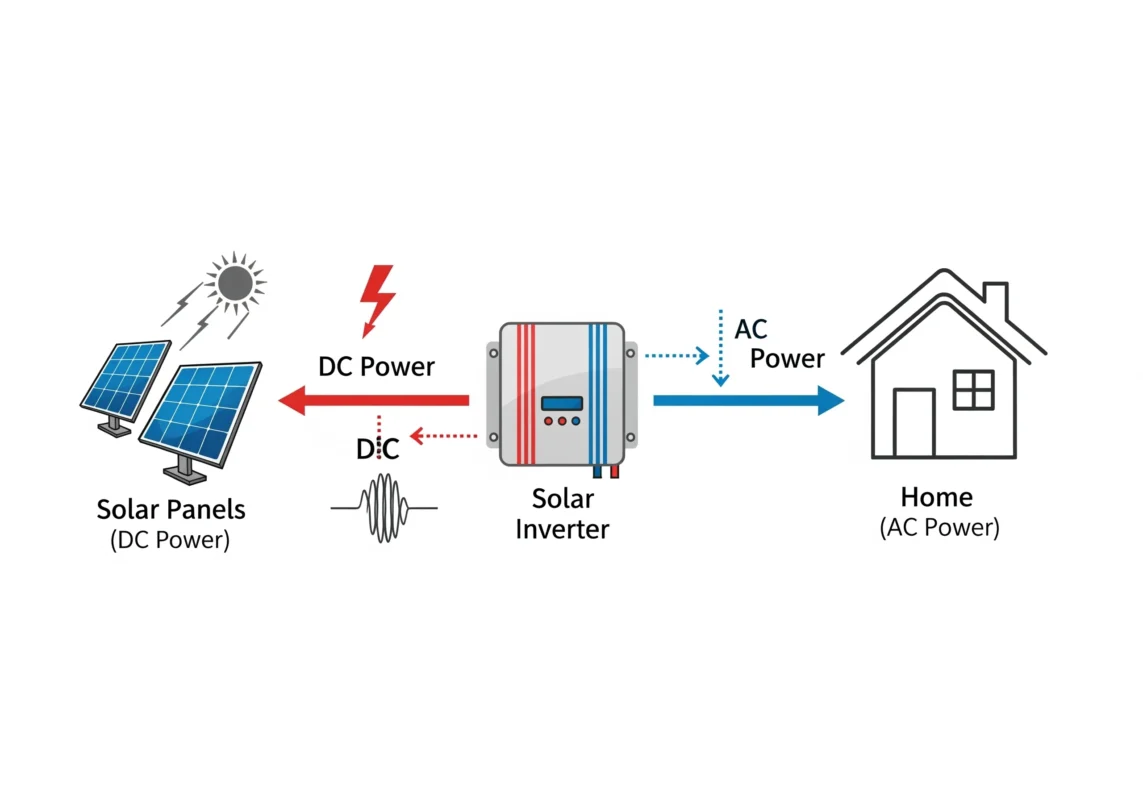
Perguntas frequentes
Quais são as desvantagens de um inversor solar?
Embora os inversores solares sejam essenciais para a conversão de energia solar, eles têm algumas limitações:
- Potencial de falha: Os inversores têm uma vida útil mais curta do que os painéis solares e podem precisar ser substituídos depois de 10 a 15 anos para inversores string ou de 15 a 25 anos para microinversores.
- Custo inicial: inversores de alta qualidade podem ser caros, o que aumenta o custo inicial de um sistema solar.
- Necessidade de manutenção: Os inversores exigem inspeções e monitoramento periódicos para garantir o desempenho ideal.
Apesar dessas desvantagens, a escolha de um inversor solar residencial confiável com manutenção adequada pode minimizar os riscos e maximizar a produção de energia.
O que é a regra 33% em painéis solares?
A regra 33% geralmente se refere a uma diretriz que limita a entrada total de energia CC em um inversor a 133% de sua classificação de saída CA. Isso garante que o inversor solar opere de forma segura e eficiente sem ser sobrecarregado, protegendo tanto o inversor quanto o sistema elétrico de sua residência.
Qual é a vida útil média de um inversor solar?
- Inversores de cordas: Normalmente, duram de 10 a 15 anos.
- Microinversores: Podem durar de 15 a 25 anos devido à operação distribuída e ao menor estresse térmico.
- Inversores híbridos: Geralmente em torno de 10 a 15 anos, mas a integração da bateria pode exigir manutenção adicional.
Compreender a vida útil do seu inversor solar residencial ajuda a planejar substituições e a fazer um orçamento para custos de energia de longo prazo.
O que não é recomendado para o uso do inversor?
Certas condições e práticas podem reduzir a vida útil de um inversor solar:
- Temperaturas extremas: Evite instalar os inversores sob luz solar direta ou em áreas sem ventilação.
- Alta umidade ou umidade: A exposição à água ou à umidade excessiva pode danificar os componentes internos.
- Sobrecarga: A conexão de muitos painéis a um único inversor pode sobrecarregar o sistema.
- Negligenciar a manutenção: Deixar de monitorar ou inspecionar o inversor pode permitir que pequenos problemas aumentem.
O cumprimento das diretrizes do fabricante e a instalação profissional garantem a operação segura e eficiente do inversor solar residencial.
O que acontece se você conectar muitos painéis solares a um inversor?
A conexão de mais painéis do que o inversor foi projetado para suportar pode causar problemas:
- Corte de energia: O inversor limitará a saída de energia, desperdiçando parte da eletricidade gerada.
- Superaquecimento: O excesso de carga pode estressar o inversor, reduzindo a eficiência ou causando desligamentos.
- Redução da vida útil: A sobrecarga contínua pode acelerar o desgaste dos principais componentes.
O dimensionamento adequado de acordo com a regra 120% e as especificações do inversor é essencial para evitar esses problemas.
Qual é a regra 120% para energia solar?
A regra 120%, conforme definido na NEC 705.12(D)(2), permite que os sistemas solares se conectem a painéis elétricos com uma classificação de barramento de até 120% da saída do inversor. Isso garante:
- Conformidade com os códigos elétricos: Evita riscos à segurança e violações de códigos.
- Produção otimizada de energia: Permite um pouco mais de capacidade solar sem sobrecarregar o painel.
- Operação segura do sistema: Evita superaquecimento e falhas elétricas.
A adesão a essa regra é vital ao projetar um sistema de inversor solar residencial.
Um inversor solar maior é melhor?
Não necessariamente. Embora possa parecer intuitivo que um inversor solar maior possa lidar com mais energia, o superdimensionamento tem desvantagens:
- Custos mais altos: Inversores maiores são mais caros no início.
- Menor eficiência em cargas baixas: A operação abaixo da carga ideal pode reduzir a eficiência da conversão de energia.
- O dimensionamento adequado é fundamental: A escolha de um inversor que corresponda às suas necessidades de energia e à capacidade do painel garante uma operação segura e eficiente.
Um inversor solar residencial cuidadosamente dimensionado e adaptado ao uso de energia de sua casa é sempre uma escolha mais inteligente do que simplesmente optar pela maior unidade disponível.




